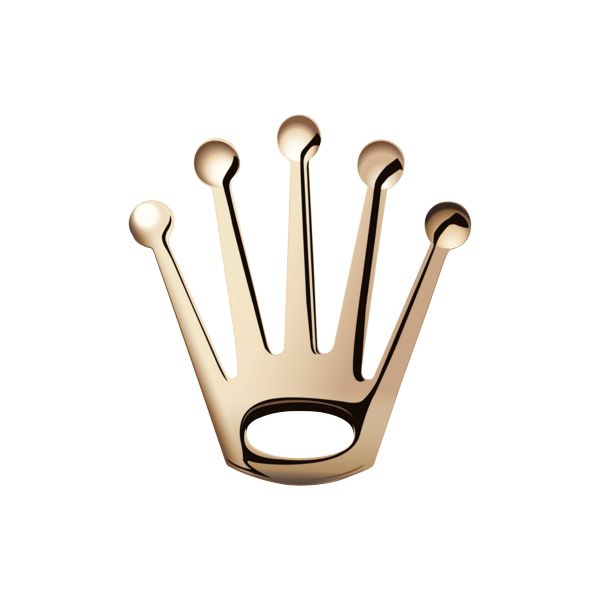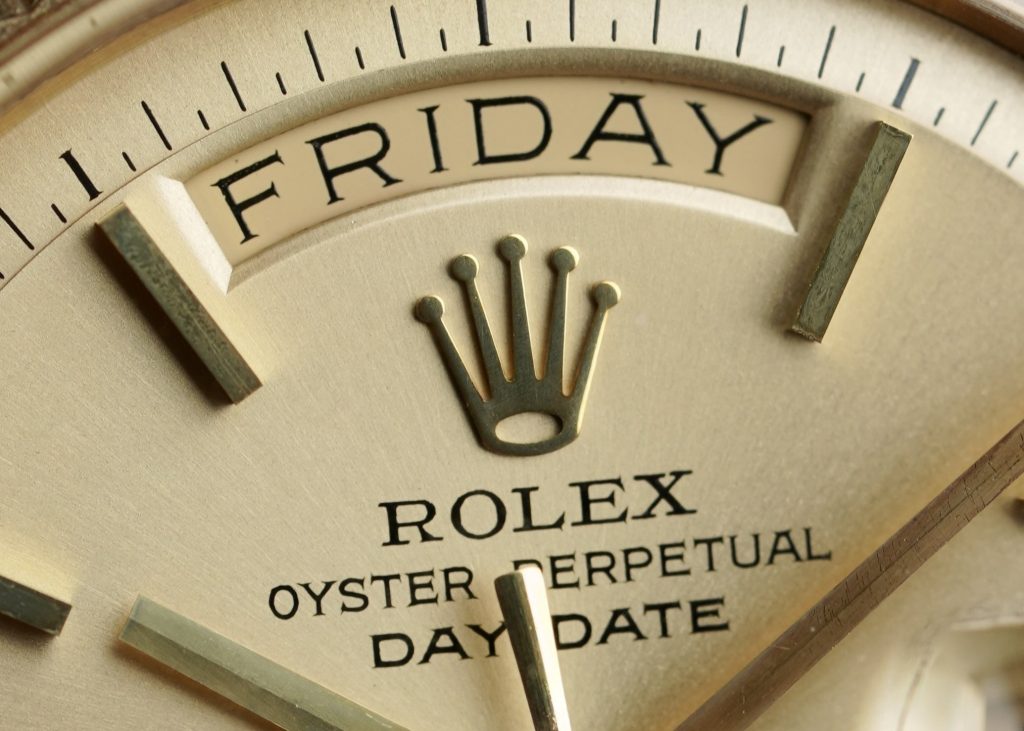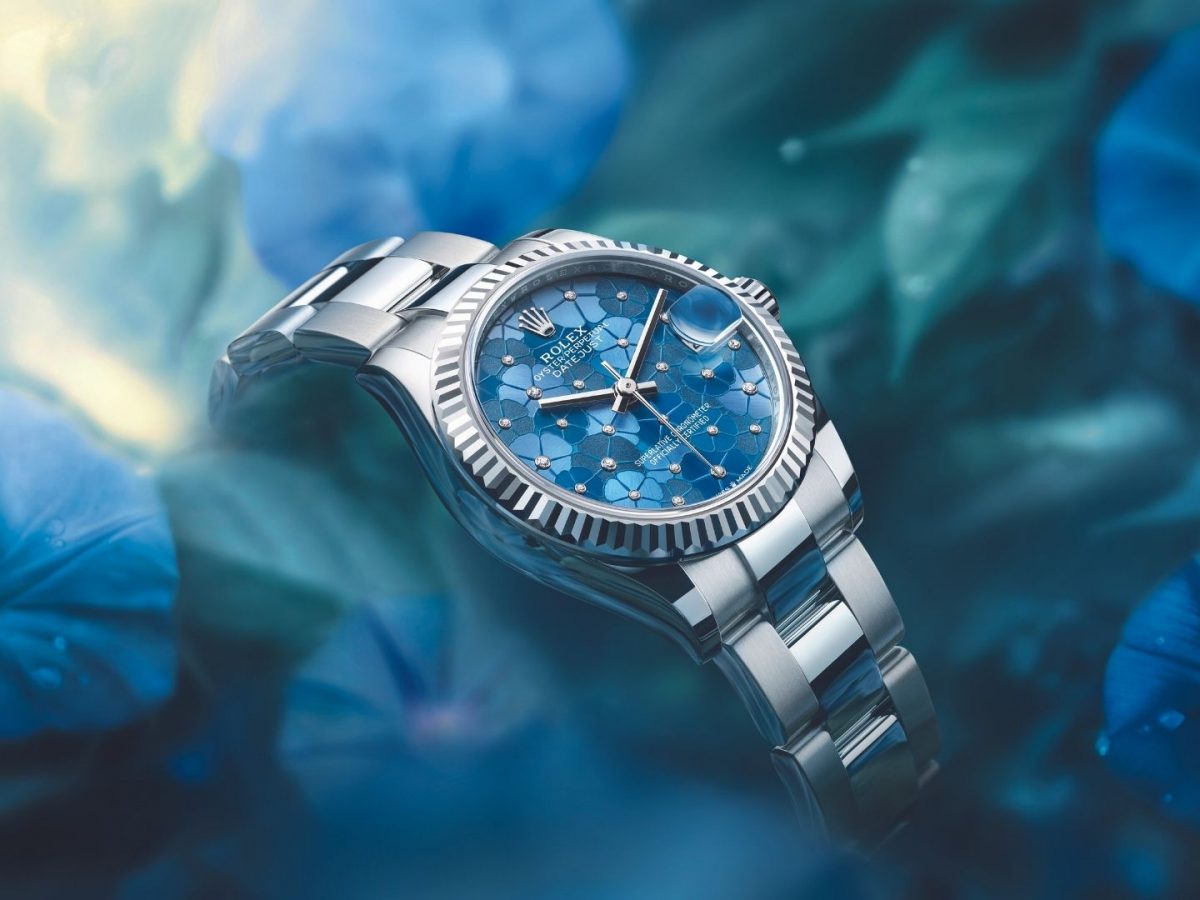Blog
Dial Decoded: The Hidden Meanings Behind Rolex Watch Details
Dial Decoded: The Hidden Meanings Behind Rolex Watch Details
Discover the hidden meanings behind Rolex watch details — from dial typography and lume codes to rare variants like Stella and Tropical dials. Decode Rolex design like a true collector.
When most people think of Rolex, they picture luxury, precision, and timeless status. But behind the polished bezel and iconic crown lies something far more fascinating—the dial. Often overlooked, the dial holds a secret language that reveals everything from authenticity and production era to hidden artistry and cultural influence.
In this blog, we’ll dive into the world of Rolex dials and decode the details that most people miss. You’re about to discover that a Rolex doesn’t just tell time—it tells a story.
1. The Dial Is More Than Meets the Eye
At first glance, the Rolex dial seems simple: a logo, markers, hands. But look closer, and you’ll find that every detail is meticulously planned and crafted.
The text “Superlative Chronometer Officially Certified” isn’t just a slogan. It signifies Rolex’s higher-than-standard precision testing—more demanding than what’s required by official chronometer tests. Even the spacing between letters and lines follows strict design logic, and minor differences in typography help collectors identify the exact era a watch was produced.
At the bottom of many dials, you’ll notice small inscriptions like “Swiss Made” or “T<25.” These codes indicate what type of luminous material was used—Tritium in older models, Super-LumiNova in modern ones—and offer valuable clues about a watch’s age.
2. Rail Dials and the Art of Symmetry
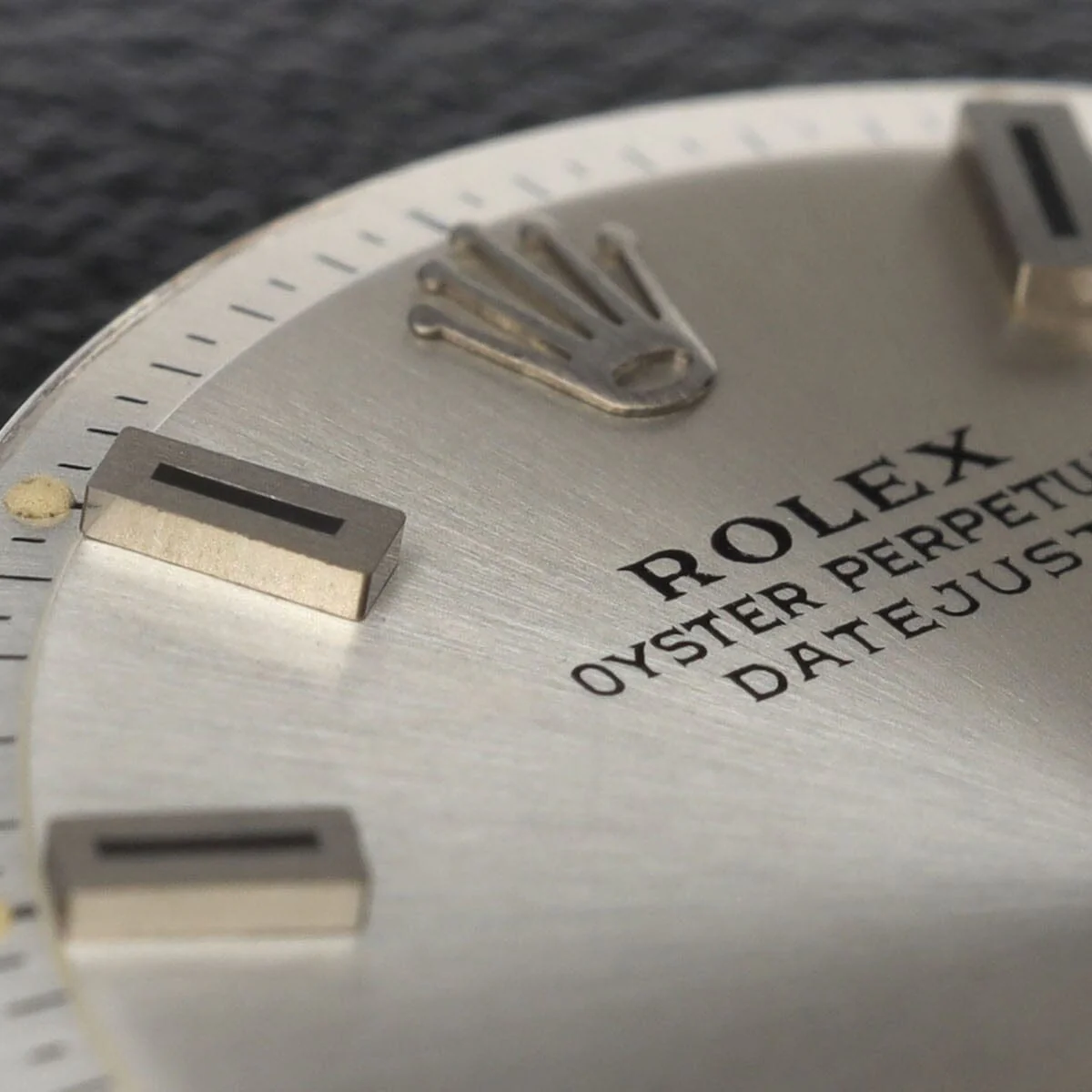
One of the most fascinating details in Rolex dial design is the Rail Dial. This feature appears when the text on the lower half of the dial—usually “Superlative Chronometer” and “Officially Certified”—lines up perfectly, forming parallel lines like train tracks.
It’s a small detail, but it shows how obsessed Rolex is with symmetry and visual harmony. For collectors, this alignment isn’t just aesthetically satisfying—it can also help identify rare or transitional models from specific production years.
Even font style and letter thickness are carefully chosen. Rolex uses incredibly consistent typography, and any deviation—no matter how minor—can signal a redial or counterfeit.
3. Luminous Legends: From Tritium to Chromalight
Over the decades, Rolex has evolved the luminous materials on its dials:
-
Tritium: Used in watches from the 1960s to 1990s. Marked as “T Swiss T” or “T<25.” It glows softly but fades over time.
-
Super-LumiNova: Introduced later as a safer, non-radioactive solution.
-
Chromalight: Rolex’s proprietary luminescent material, glowing blue and lasting longer than standard lume.
These shifts are more than just tech upgrades—they help date the watch and provide insight into Rolex’s innovation journey.
4. Rare Dials: Mistakes, Masterpieces, and Icons
Paul Newman Dial
Probably the most famous dial in Rolex history. Found on vintage Daytona models, the Paul Newman dial features art deco numerals and contrasting sub-dials. Once unpopular, these watches are now auction stars worth hundreds of thousands of dollars.
Tropical Dial
Originally considered a defect, some black dials naturally faded into a warm chocolate brown due to sun exposure. Today, this patina is treasured. No two tropical dials are the same, making each one a unique collectible.
Stella Dial
In the 1970s, Rolex released brightly colored lacquered dials for the Day-Date line, mainly for Middle Eastern and Asian markets. These include turquoise, coral red, and canary yellow—rare, expressive, and highly collectible today.
Puzzle & Emoji Dials
Modern releases like the Day-Date “Puzzle Dial” show Rolex’s playful side. Instead of days and dates, these watches display emojis and positive words like “Gratitude,” “Love,” or “Hope.” A technical and artistic masterpiece, this dial combines traditional enamel work with a bold new message.
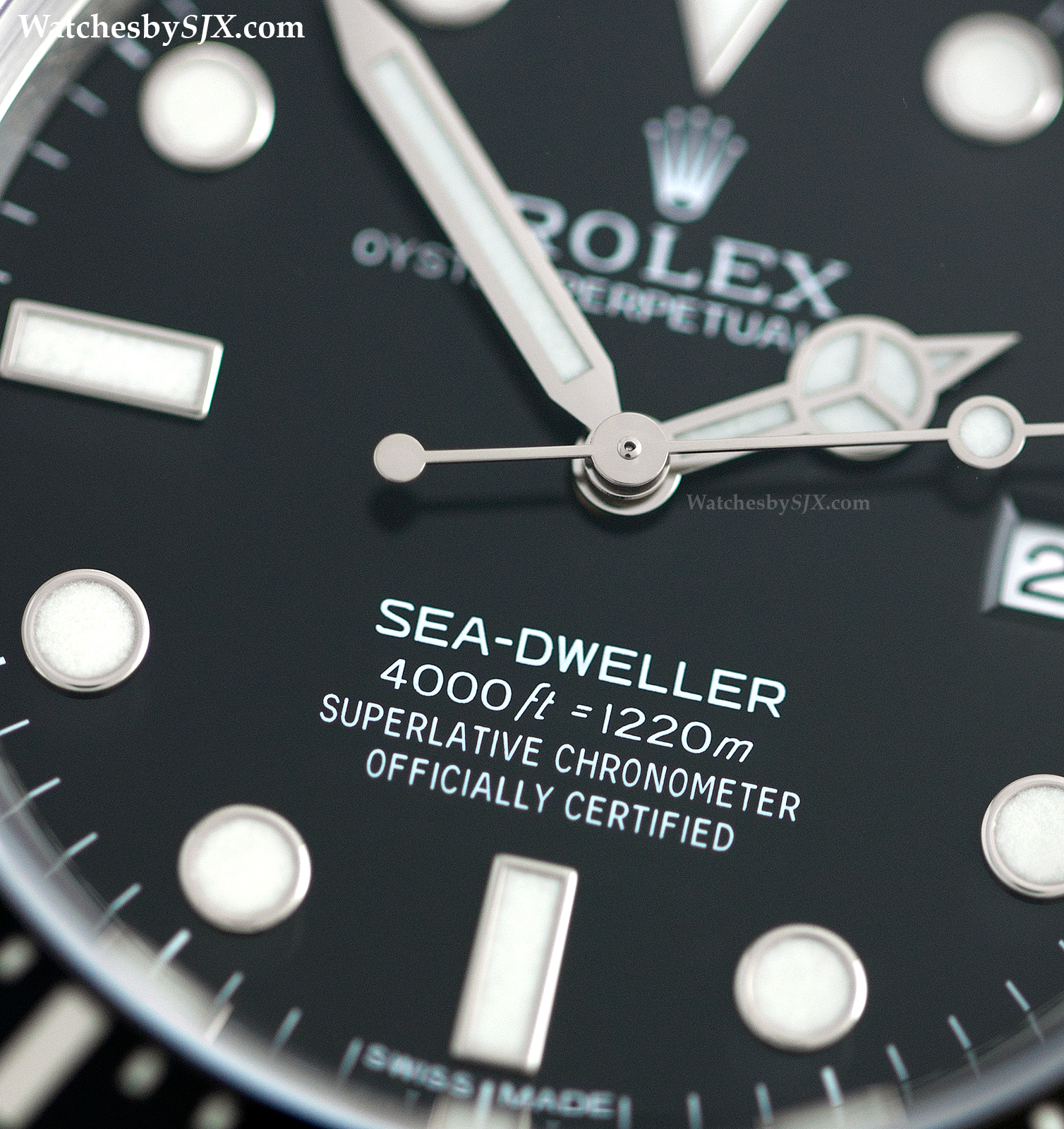
5. Applied Markers vs Painted Indices
Another dial detail often missed: whether hour markers are applied or painted. Applied markers—usually made of white gold—add depth and shine, showing Rolex’s luxury craftsmanship. Painted markers, more common in vintage or tool watches, offer a flatter appearance and age differently.
This detail helps collectors determine the target market of a model, and even the level of prestige Rolex intended for that particular watch.
6. The Crown, the Cyclops, and the Crosshair
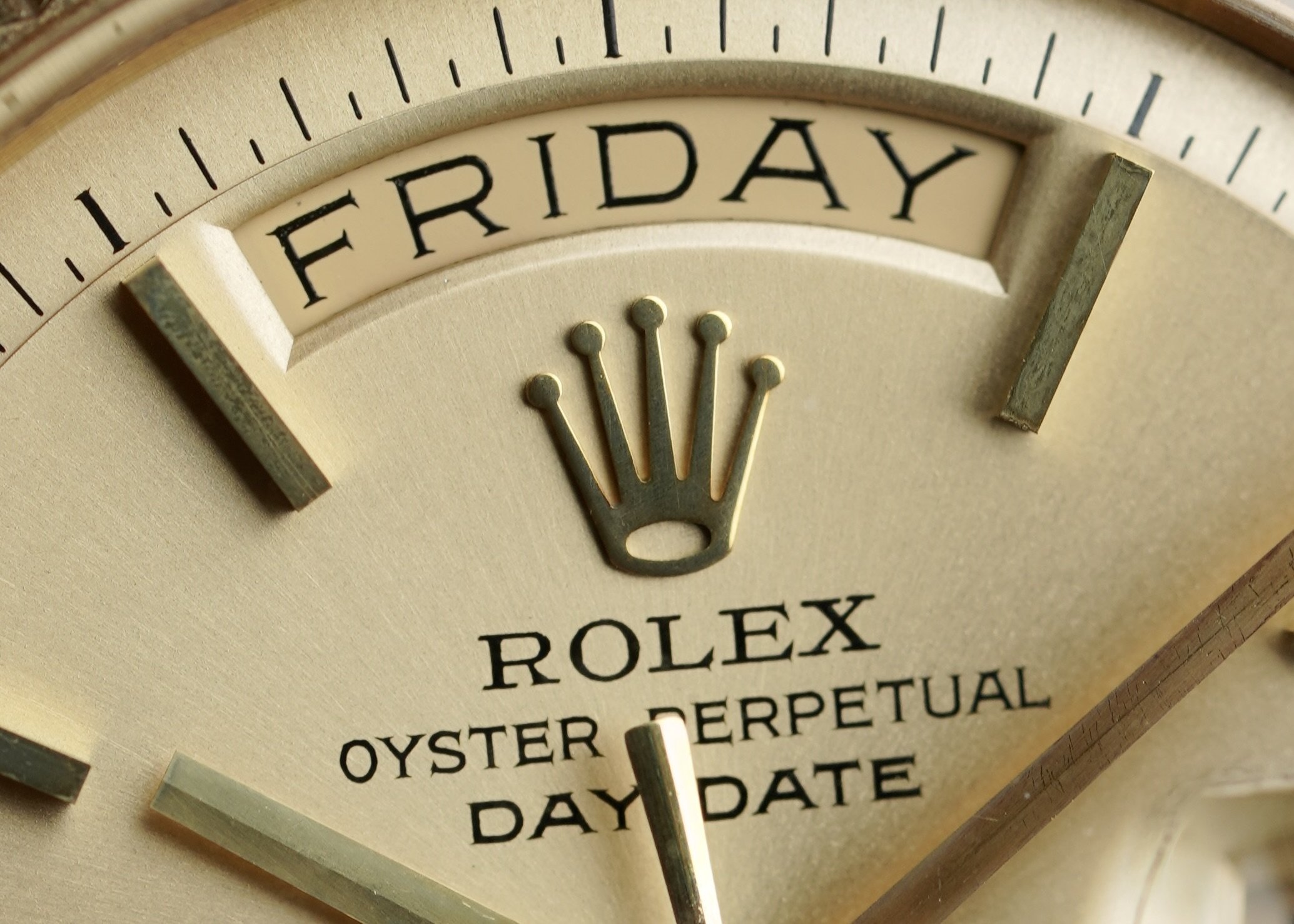
The five-point Rolex crown logo on the dial is more than just branding—it evolves subtly over time. Vintage watches have unique crown shapes, nicknamed “Frog Foot” or “Bart Simpson” by collectors, based on the crown’s proportions and point shape.
The Cyclops lens, sitting above the date window, magnifies the date 2.5x. It’s iconic, yes—but also a dead giveaway of authenticity. Many counterfeits get this detail wrong, either in placement or magnification power.
Some Rolex dials also feature crosshair lines—two ultra-thin intersecting lines across the dial’s center. These aren’t just for aesthetics; they add balance and a technical vibe that appeals to collectors.
7. Dial Details Matter to Collectors
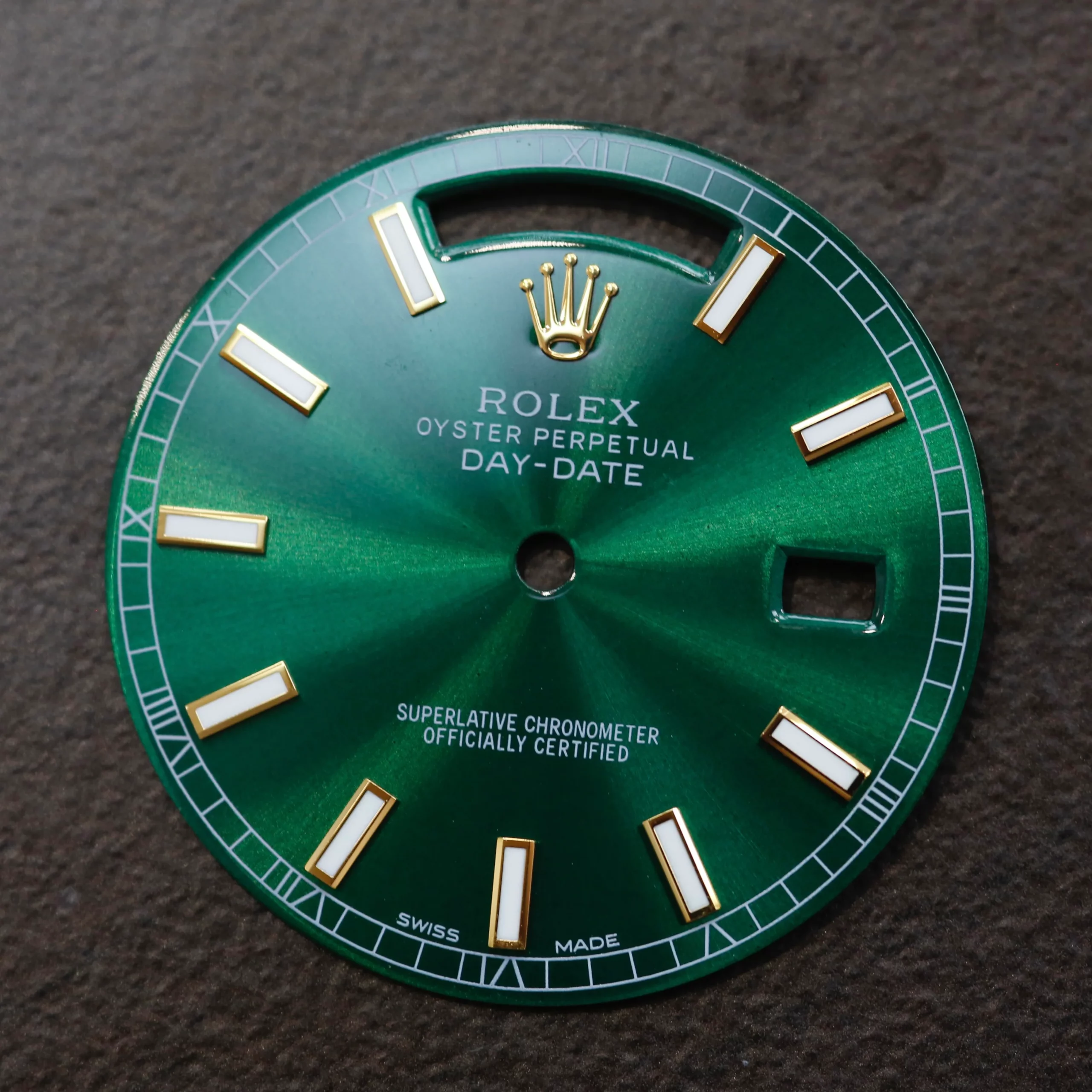
Why do collectors obsess over dials?
-
Authentication: Fonts, lume type, crown style—all offer clues to a watch’s originality.
-
Era Identification: Dial details help date the watch down to specific years.
-
Investment Value: Rare dials (like Tropical or Stella) command huge premiums.
-
Emotional Appeal: A unique dial color or texture often speaks to a collector’s taste or nostalgia.
For many, the dial isn’t just a design—it’s the heart of the watch.
8. A Quick Guide to Decoding the Dial
| Dial Element | What It Tells You |
|---|---|
| “Swiss” / “T<25” | Lume material and production era |
| Rail Dial | High precision typography, collectible trait |
| Tropical Patina | Natural age, uniqueness, vintage charm |
| Stella Colors | Bold expression, 1970s cultural relevance |
| Emoji / Puzzle Layout | Modern creativity and technical innovation |
| Cyclops Magnification | Authentic Rolex hallmark |
| Applied vs Painted Index | Indicates model level and design depth |
Conclusion: What’s Really on Your Rolex Dial?
The Rolex dial is not just a face—it’s a fingerprint. Every line, every marker, every shift in color or font is packed with meaning. Whether you’re a seasoned collector or just starting to explore, understanding these details gives you a deeper appreciation for the craftsmanship, history, and hidden genius behind Rolex.

